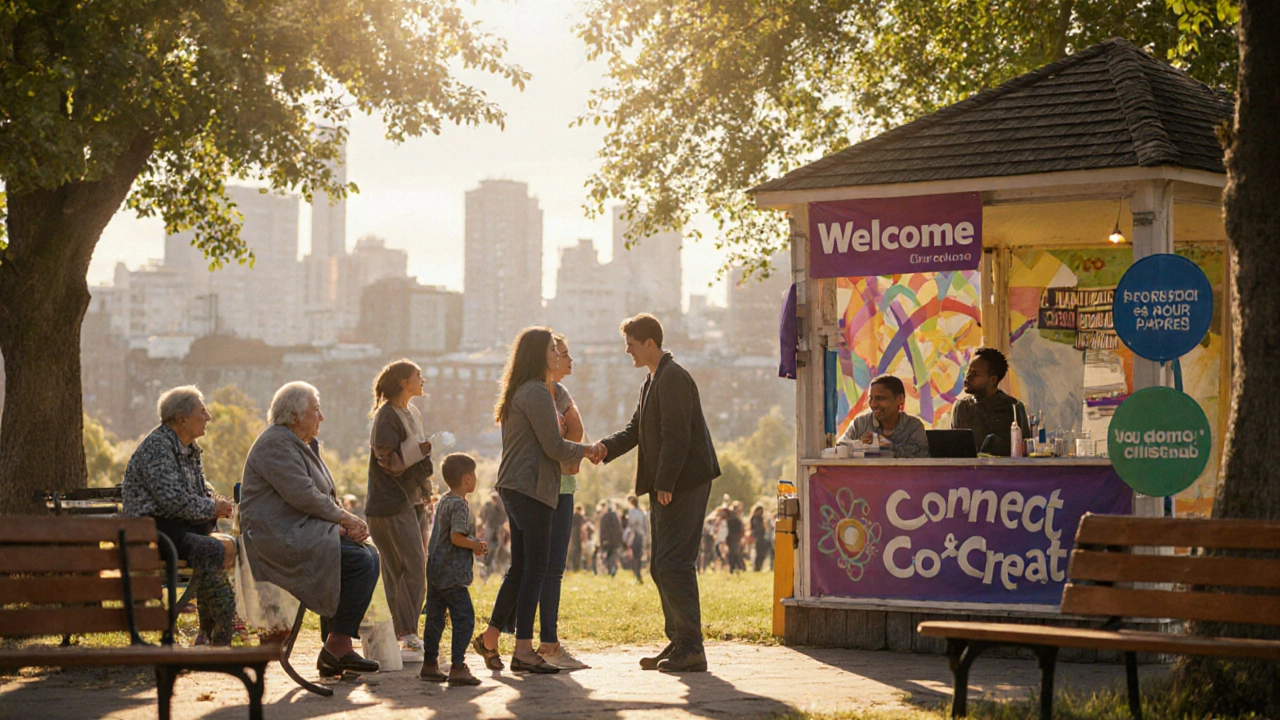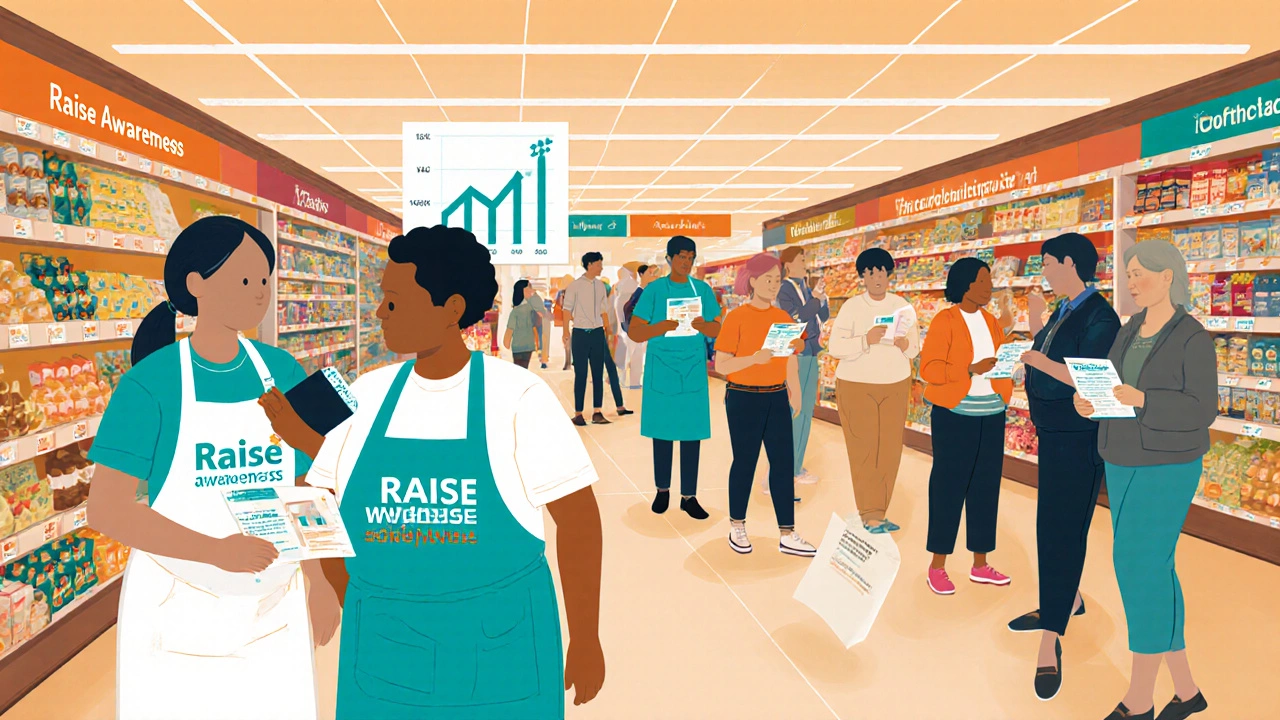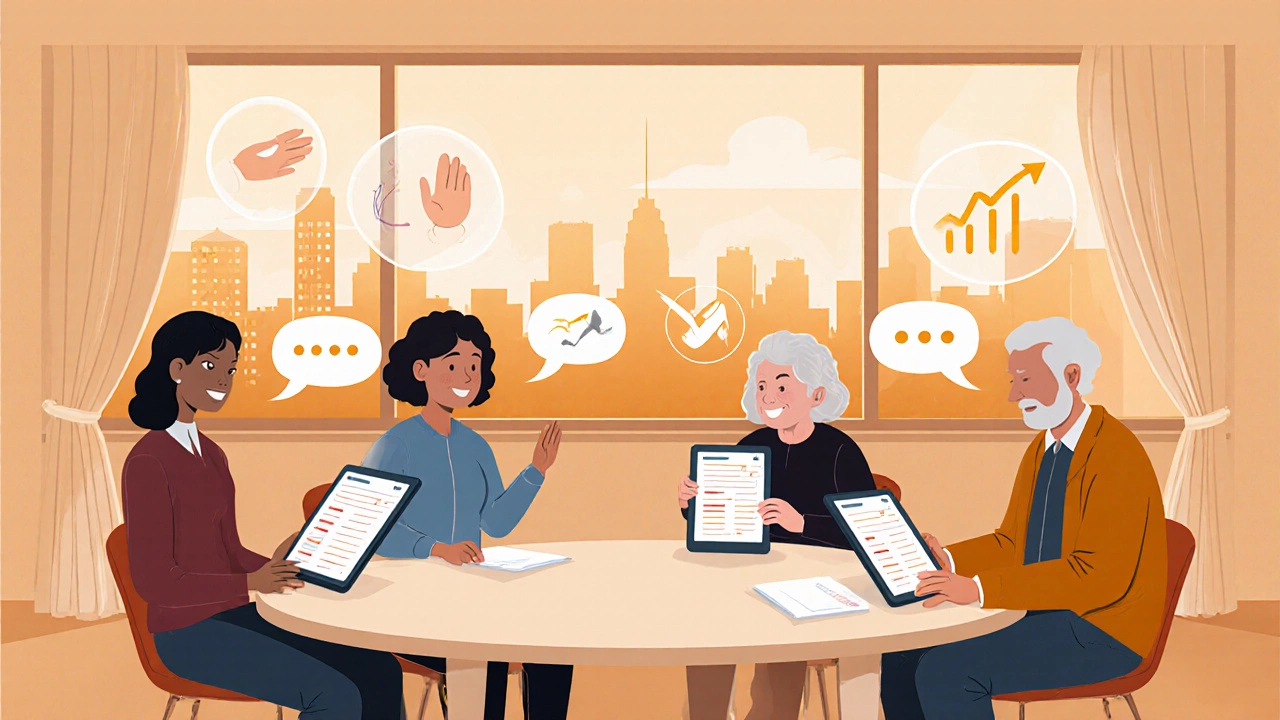What Is the Main Goal of Community Outreach? A Practical Guide
 Oct, 12 2025
Oct, 12 2025
Community Outreach Goal Checker
Set Your Outreach Goal
Enter your community outreach goal to check if it meets SMART criteria (Specific, Measurable, Achievable, Relevant, Time-bound).
SMART Criteria Analysis
How to Improve Your Goal
SMART Criteria:
- S Specific: Clear, detailed, and well-defined
- M Measurable: Quantifiable with data
- A Achievable: Realistic with available resources
- R Relevant: Aligns with community needs and organizational mission
- T Time-bound: Has a clear deadline
When a nonprofit, local council, or grassroots group talks about community outreach, what they really mean is connecting with people outside their walls to spark positive change. Pinpointing the main goal of that effort is the first step toward designing programs that actually move the needle, not just fill a checklist.
Quick Summary
- The core purpose of community outreach is to build lasting, mutually beneficial relationships between an organization and its target community.
- Key sub‑goals include raising awareness, encouraging participation, and empowering community members.
- Effective outreach starts with clear, measurable objectives tied to real‑world impact.
- Use simple metrics-attendance, volunteer hours, policy changes-to track progress.
- Avoid common traps like one‑way messaging, vague goals, or neglecting community feedback.
What Is Community Outreach?
Community outreach is a strategic effort by an organization to engage, educate, and collaborate with people who live, work, or gather in a specific geographic or interest‑based area. It goes beyond occasional events; it’s about creating a two‑way dialogue that brings real value to both sides.
The Main Goal: Building Sustainable Relationships
At its heart, community outreach aims to establish and nurture sustainable relationships. Those relationships become the foundation for trust, shared resources, and collective problem‑solving. When people feel genuinely heard and see tangible benefits, they’re more likely to stay involved, advocate for the cause, and even co‑design solutions.

Supporting Objectives That Feed the Main Goal
While the overarching purpose is relationship‑building, most outreach programs break this down into three practical sub‑goals:
- Raise Awareness - Let the community know about a problem, service, or opportunity.
- Encourage Participation - Get people to attend events, volunteer, or contribute ideas.
- Empower Community Members - Provide tools, skills, or platforms that let locals take action on their own terms.
Each sub‑goal creates a stepping stone toward that deeper, lasting partnership.
How to Set Clear, Measurable Outreach Goals
Turning a vague ambition into a concrete plan involves four simple steps:
- Identify the Target Audience. Define the demographic, geographic, or interest‑based group you want to reach. Use data from local census reports, school records, or social media insights.
- State the Desired Outcome. Phrase the goal in an action‑oriented way, e.g., “Increase attendance at the monthly health‑screening clinic by 25% within six months.”
- Choose Relevant Metrics. Pick quantitative or qualitative indicators that directly reflect the outcome-attendance numbers, volunteer hours logged, policy changes, or satisfaction survey scores.
- Set a Timeframe. A clear deadline creates urgency and makes it easier to evaluate success.
Here’s a quick checklist you can copy‑paste into a project plan:
- Target audience: low‑income families in East Edinburgh
- Goal: Distribute 500 free winter coats
- Metric: Number of coats handed out
- Deadline: By December1,2025
Real‑World Examples of Successful Outreach
Seeing the theory in action helps you picture what works.
- Health‑Check Pop‑Ups in Glasgow - A local NHS trust partnered with community volunteers to set up weekly health‑check stations at grocery stores. They started with a goal of screening 200 people per month; after six months, the number rose to 1,200, and 15% of screened residents sought follow‑up care.
- Youth Coding Workshops in Manchester - A tech charity wanted to boost digital skills among teenagers. They measured success by the number of completed projects and found that 85% of participants built a functional app, leading to a 30% increase in applications for apprenticeship programs.
- Senior Garden Program in Edinburgh - A neighborhood association created communal garden plots for seniors. The primary metric was “hours of social interaction per participant,” which jumped from an average of 2hours/week to 6hours/week within three months, dramatically reducing reported loneliness.

Common Pitfalls & Pro Tips
Even well‑intentioned outreach can fall flat. Here are the most frequent mistakes and what to do instead:
| Pitfall | Pro Tip |
|---|---|
| One‑way messaging | Invite feedback through surveys, town halls, or social media polls. |
| Vague goals | Use SMART criteria (Specific, Measurable, Achievable, Relevant, Time‑bound). |
| Ignoring cultural nuances | Partner with trusted local leaders who understand community norms. |
| Measuring only outputs | Track outcomes like behavior change or policy impact, not just event count. |
| Failing to follow up | Schedule post‑event debriefs and share results with participants. |
Checklist for a Goal‑Focused Outreach Campaign
- Define the primary relationship you want to build (e.g., trust, collaboration, advocacy).
- Map out sub‑goals (awareness, participation, empowerment) that support the main relationship.
- Choose 2-3 clear metrics for each sub‑goal.
- Identify at least one community partner to co‑lead the effort.
- Create a feedback loop: surveys, focus groups, or informal check‑ins after each activity.
- Review data every month and adjust tactics as needed.
Frequently Asked Questions
Why is relationship‑building more important than a single event?
A one‑off event can raise awareness, but it doesn’t create the trust or ongoing engagement needed for lasting impact. Sustainable relationships turn occasional participants into advocates, volunteers, and co‑creators, which multiplies the organization’s reach over time.
How do I choose the right metrics for my outreach program?
Start with the goal you’ve set. If the goal is to increase community involvement, attendance counts or volunteer hours work. If you aim to empower, look at skill‑acquisition rates or post‑program surveys measuring confidence.
Can small charities afford sophisticated outreach tracking?
Yes. Simple spreadsheets, free Google Forms, or low‑cost project‑management tools can capture attendance, feedback, and outcomes. The key is consistency, not complexity.
What role do volunteers play in community outreach?
Volunteers are the bridge between the organization and the community. They bring local credibility, help amplify messages, and often provide the manpower needed for events. Engaging volunteers early and giving them ownership boosts both participation and relationship depth.
How often should I reassess my outreach goals?
At a minimum, review quarterly. If you’re running a short‑term campaign, a monthly check‑in helps catch early signs that a tactic isn’t resonating, allowing you to pivot before resources are wasted.
